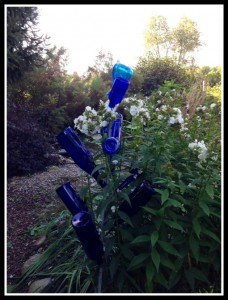Serendipity Gardens Seed Heads and Seed Pods
Here is a little variation on a familiar childhood poem:
Roses are red,
Violets are blue,
Flowers are beautiful,
Seed heads are, too.
As fall winds down, the seed heads in Serendipity Gardens become more noticeable. On a walk around the garden late one afternoon, I took lots of photos of a more subtle beauty than the beauty of mid-summer flowers that produced them.
Plants have developed many ways to propagate themselves. The seeds in these fluffy ironweed beauties, for example, are available for the wind to carry away. Other seeds come in pods that burst open to scatter the seeds. Some seed pods have air-filled bladders attached so they can float on water until they reach a suitable place for germination. Still others are packaged in tasty fruits such as berries to tempt a bird or other animal to eat and digest them. Barbs or hooks on a seed head help it to attach itself to the fur of an animal. The seeds that use creatures can often land miles away from their mother plant.



